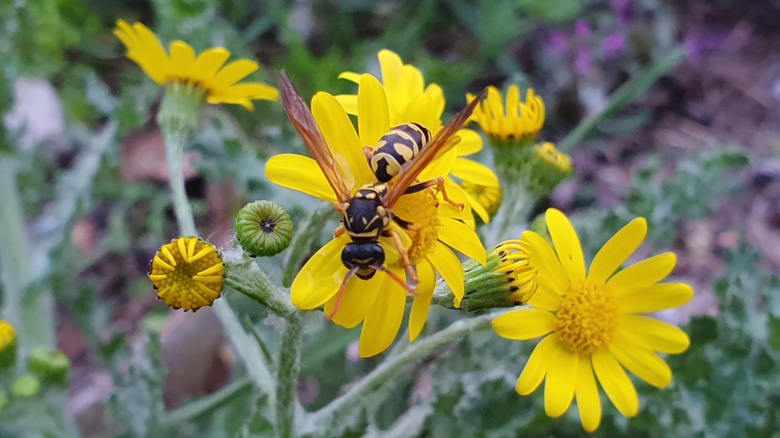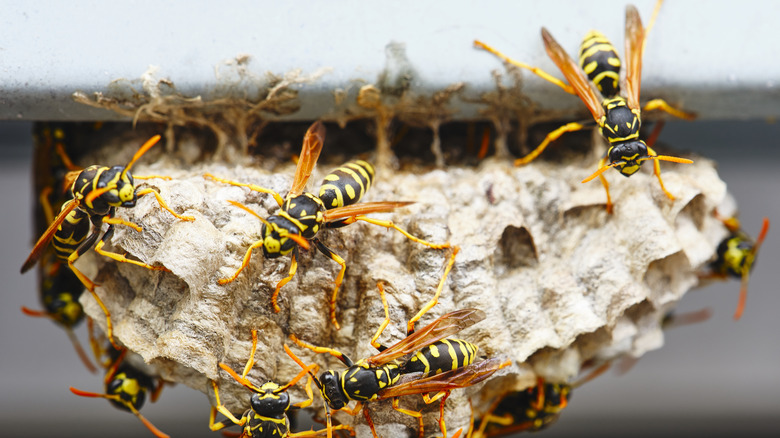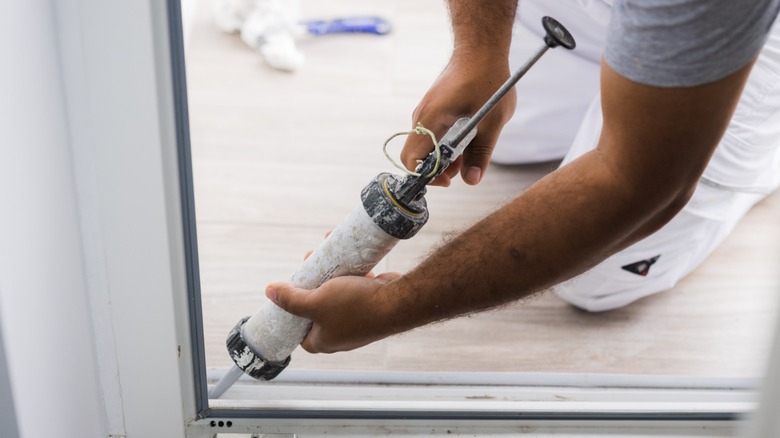Why Wasps Are Much More Active During Fall (And What To Do About It)
When some people notice more wasps in their yard, they feel an increased level of anxiety, almost as an instinctual reaction. Others might recognize them as local pollinators that play an important role in the ecosystem and welcome their presence. Whether you value them, fear them, or both, it's true that they become much more active in the fall and can be more aggressive, too. There are multiple reasons for this, but most stem from the fact that it's part of their natural cycle of life to become more active when temperatures start falling. These reasons include that, during this time of year, their colonies are the most full and they're often out in search of food, water, and warmth. However, there are things you can do to make your yard safe for everyone without harming the wasps in the process.
More people today are paying closer attention to their individual contributions to the environment. With this awareness comes a responsibility to protect the native species around us. Wasps are a big and important part of the ecosystem, and most of the bad reputation they get is undeserved. There are over 100,000 species and only 1,000 of them live socially in nests together, while the rest are either solitary or parasitoids, and every type plays an important role in the big picture.
Why wasps are more active in the fall
By the time fall arrives, the wasps we typically see the most have already built nests, bred, laid eggs, and grown large colonies. Nests are at maximum capacity, so their sheer numbers are much higher than at any other time of the year. More wasps are subsequently searching for food and water — which is scarce, and why they're more bothersome than normal. They're actively searching out sugar and carbs instead of protein and nectar, so your sugary drinks are fair game. They also feed on bugs, which could lead them into your garden during the fall. And, they're in search of warmth, which may lead them closer to your home.
Additionally, social wasps are also doing their job and protecting the queen. The queen is likely to be the colony's only survivor over the winter, so if she is searching for her winter home or you get too close, her protectors are even more likely to be aggressive. The cooler temperatures have them on edge, and they're searching for food and warmth in higher numbers. This is why they're often more active and possibly more aggressive in the fall, but they're still not interested in stinging humans if unprovoked. Additionally, there are steps you can take to limit or avoid encounters, for the most part.
How to limit wasp activity
The first thing you should do to get rid of wasps is watch what you bring outside to eat or drink with you. Try not to leave any open cans or bottles unattended and keep food covered up. Outdoor fans can be a big help, as wasps don't like the added wind force. Make sure you don't swat at them if you do encounter them, or you're more likely to get stung. Additionally, keep your trash can lids tightly closed so that wasps aren't attracted to what's inside. Remember, they're hungrier in the fall, so they're looking for food sources. Planting specific species of flowers and plants in your yard, like marigolds and certain types of herbs, could also help keep them away.
You'll also want to seal up any possible entrances into your home. Keep in mind that the queen is looking for her winter shelter and she can squeeze into some very tiny crevices. Take a caulking gun and do a thorough inspection of your home's interior perimeter, sealing up any possible cracks or holes you find. Then do the same thing around the exterior of the house. You can double check with a flashlight to make sure no light is coming through anywhere. Remember, wasps play a very important role in the ecosystem, but if they become a problem with the safety of your family, call a professional.


